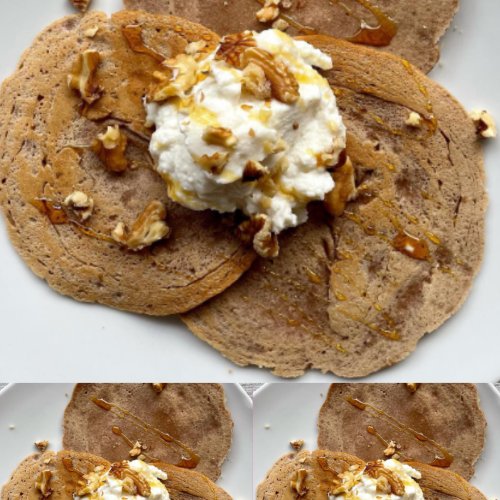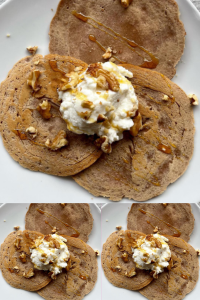
Necci Toscani
Equipment
- Equipment Needed
- Mixing bowl
- Whisk or fork
- Non-stick skillet or griddle
- Ladle
- Spatula
- Serving plate
Ingredients
- Ingredients:
- 200 g 1 ¾ cups chestnut flour
- 300 ml 1 ¼ cups water
- Pinch of salt
- Olive oil or butter for greasing the skillet
- Optional Toppings:
- Ricotta cheese
- Honey or jam
- Nutella or melted chocolate
- Chopped nuts e.g., walnuts or hazelnuts
Instructions
- Step-by-Step Instructions:
- Step 1: Prepare the Batter
- In a mixing bowl, sift the chestnut flour to remove any lumps.
- Add a pinch of salt for balance.
- Gradually pour in the water while whisking continuously to create a smooth, lump-free batter. The consistency should resemble that of crepe batter thin but not too watery.
- Step 2: Rest the Batter
- Let the batter stand for about 5 minutes to allow the flour to absorb the water fully.
- Step 3: Heat the Skillet
- Heat a non-stick skillet or griddle over medium heat. Lightly grease it with olive oil or butter.
- Step 4: Cook the Pancakes
- Using a ladle, pour a small amount of batter into the skillet, tilting it to spread the batter evenly. Aim for thin pancakes, about 5–6 inches in diameter.
- Cook for 2–3 minutes until the edges start to lift and the bottom is golden brown. Flip carefully with a spatula and cook the other side for another 1–2 minutes.
- Transfer to a plate and repeat with the remaining batter, greasing the skillet as needed.
- Step 5: Serve and Enjoy
- Serve warm, stacked or folded, topped with ricotta cheese and a drizzle of honey or any topping of your choice.
- Variations, Tips, and Substitutions:
- Dairy-Free Option: Use coconut cream or almond cream instead of ricotta.
- Gluten-Free Note: Chestnut flour is naturally gluten-free, making this dish suitable for those with gluten intolerance.
- Sweetened Pancakes: Add 1–2 tablespoons of sugar or honey to the batter if you prefer sweeter pancakes.
- Savory Twist: Omit sweet toppings and pair with cheese and prosciutto for a unique appetizer.
- Pro Tip: If you can't find chestnut flour locally, try online specialty stores or substitute with buckwheat flour for a slightly different flavor.

Notes
Notes on What to Expect:
Necci Toscani have a distinctive, earthy sweetness thanks to chestnut flour. Their texture is soft yet slightly elastic, similar to crepes. Paired with creamy ricotta and honey, they are both comforting and indulgent. These pancakes are thinner than American pancakes but thicker than French crepes.